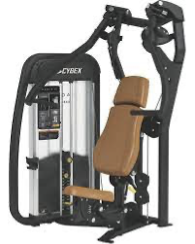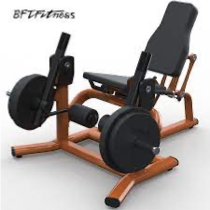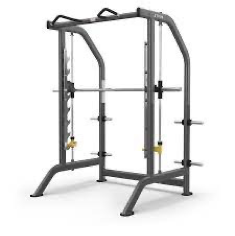HSS 395 Resistance Training Program Design
1/35
There's no tags or description
Looks like no tags are added yet.
Name | Mastery | Learn | Test | Matching | Spaced |
|---|
No study sessions yet.
36 Terms
Where do you start when designing a resistance training program?
Determine your client’s goals and training status
What are the four primary resistance training goals?
Muscular endurance
Hypertrophy
Muscular strength
Muscular power
Muscular endurance
Ability to perform at a submaximal level for many reps or an extended time (e.g., “I want to be able to do 20 push-ups in a row.”)
Hypertrophy
An increase in muscle size (e.g., “I want to tone up before my vacation.”)
Muscular strength
Increase in weight or load lifted (e.g., “I want to be able to back squat my body weight.”)
Muscular power
High force production in a short period of time, explosive (e.g., “I want to increase my vertical.”)
Determining training frequency
Allow at least 1 day between working the same muscles and no more than 3 days between workouts…
Novice/beginner: 2-3 days per week
Intermediate: 3 (total body) or 4 (split) days per week
Advanced: 3-6 days per week
Utilizing training splits
2 or less times per week — no split should be utilized (only full body)
3+ times per week — split may be appropriate
Common splits: upper/lower, push/pull, split by body part
Guidelines for choosing exercises
Untrained — 1 or 2 exercises per muscle group
Trained — increase the number of exercise per muscle group based on time, goals, and training status
Power or explosive exercises
A structural exercise that is performed very quickly (e.g., push press, snatch)
Core exercises
Aka compound lifts; involve 2+ primary joints (multijoint) & engage large muscles while activating synergistic muscles (e.g., overhead squat, Romanian deadlift)
Assistance exercises
Single-joint exercises that recruit a small amount of muscle mass; supplementary exercises used to maintain muscular balance, help prevent injury, or isolate a specific muscle group (e.g., lateral raise, abdominal crunch)
Determining exercise order
Power → core → assistance
Multi-joint → single joint; large muscle → small muscle
Other methods — alternating push/pull or upper/lower
Compound set
2 exercises coupled together that train the same muscle group with no rest between each exercise
Superset
2 exercises that activate opposing/antagonistic muscle groups with no rest between each exercise
Training load
Athletic populations — % 1RM
General populations — rating of perceived exertion (RPE) or reps in reserve (RIR)
Volume for strength training
2-6 sets and 6 or less reps
Volume for power training
3-5 sets and 1-2 reps (single-effort) or 3-5 reps (multiple-effort)
Volume for hypertrophy training
3-6 sets and 6-12 reps
Volume for muscular endurance training
2-3 sets and 12+ reps
Rest interval length for muscular strength training
2-5 min
Rest interval length for muscular power training
2-5 min
Rest interval length for hypertrophy training
2-3 min for multi-joint exercises; 60-90 s for single-joint exercises
Rest interval length for muscular endurance training
30 s or less
2-for-2 rule
If the client can complete 2 more repetitions than the rep goal in the final set of an exercise for 2 consecutive training sessions, it’s time to increase weight
Variation
Alteration of training variables to produce adaptations over the long-term
General population — include variation each week (week 1 should not look exactly like week 2, etc.)
Selectorized machine
Weight machine providing constant resistance through use of a series of cables and pulleys

Plate loaded machine
Machine providing constant resistance and requiring manual loading of weight plates

Rod or linear guided machine
Machine providing constant resistance; movement of weights is limited to a straight path (Smith machine)

Isokinetic machine
Computer-controlled equipment that provides accommodating variable-resistance

Should a closed or open grip be used in resistance training?
A closed grip (thumb is wrapped around the bar) should ALWAYS be used
Valsalva maneuver
Breathing practice where an individual exhales against a closed throat
Potentially dangerous when used in the wrong way
Alternative: exhale through the sticking point and inhale during the easier part of the exercise
When should you use a weightlifting belt?
Recommended for structural exercises that involve lifting maximal or near-maximal loads (e.g., squat, deadlift)
Not recommended for exercises that do not directly load the trunk (e.g., bench press)
Five-point body contact position
For exercises performed in a supine position, the following should be in contact with the seat, bench, floor, or platform:
Back of the head
Upper back and rear shoulders
Lower back and buttocks
Right foot
Left foot
Spotting
Providing physical assistance to clients when completing an exercise to reduce risk of injury
When should a spotter be utilized?
Overhead (e.g., standing shoulder press)
Over the face (e.g, bench press, lying triceps extension)
With a bar on the upper back and shoulders (e.g., back squat)
With a bar positioned on the front of the shoulders or clavicles (e.g., front squat)
**Explosive or power exercises should never be spotted